A Message from Mike
Mike Billings, Chief Strategy & Development Officer
Over the years, the National Academies of Science, Engineering, and Medicine (formerly the Institute of Medicine) has produced several landmark publications on the state of quality in our healthcare system.
For example, in 1986, the IOM published Improving the Quality of Care in Nursing Homes, a long-awaited study on nursing home quality. It examined nursing home regulations at the time and proposed an overhaul to improve care for residents of nursing homes. The study concluded that the regulatory system was inadequate. It was the impetus for President Ronald Reagan to sign the Federal Nursing Home Reform Act from the Omnibus Budget Reconciliation Act of 1987 into law, the first significant revision of the federal standards for nursing home care since the 1965 creation of both Medicare and Medicaid. It forever changed society’s expectations of nursing homes and their care. It required that they provide services so that each resident can “attain and maintain her highest practicable physical, mental, and psycho-social well-being.” Therapy services in skilled nursing services grew out of this.
In 1999, the Institute of Medicine published To Err is Human, which described the national patient safety problem. Rather than punish individuals for errors, the report advocated for root cause analysis to identify system problems resulting from errors. To Err is Human concludes by identifying five critical principles in the design of safe healthcare systems: 1) Provide leadership, 2) Respect human limits in process design, 3) Promote effective team functioning, 4) Anticipate the unexpected, and 5) Create a learning environment.
In 2001, the IOM published Crossing the Quality Chasm, which envisioned a new health system for the 21st century focused on raising the quality of care to unprecedented levels. Drawn mainly from the work of Donald Berwick, M.D., the report identified quality as a system property with six important improvement aims. For example, healthcare should be 1) Safe, 2) Effective, 3) Patient-centered, 4) Timely, 5) Efficient, and 6) Equitable.
Heightened awareness of nursing home care during the pandemic was a primary reason for a new report. As a result, the National Academies published The National Imperative to Improve Nursing Home Quality this year. The report aimed to examine how our nation delivers, regulates, finances, and measures the quality of nursing home care and then delineate a framework and general principles for improving the quality of care in nursing homes. Unfortunately, nursing home industry leaders were excluded from the technical expert panel. In addition, I think the committee had too many nurses and researchers, with rehabilitation experts noticeably absent. Nonetheless, a summary of the report’s goals and associated recommendations follows.
Goal 1 – Deliver comprehensive, person-centered, equitable care that ensures residents’ health, quality of life, and safety; promotes autonomy; and manages risks. OBRA 1987 and Crossing the Quality Chasm mandated person-centered care, but it has yet to be fully realized. Recommendations include more research regarding the most effective care delivery models and construction and renovation of nursing homes to provide smaller, more home-like environments, including private bedrooms and bathrooms.
Goal 2 – Ensure a well-prepared, empowered, and appropriately compensated workforce. There is a need for nursing home staff to be better educated in geriatric care principles. Moreover, few healthcare providers choose to work in nursing homes, and high-quality care delivery depends upon a transformation of worker training and social stature. Recommendations include competitive wages and benefits for all nursing home staff, increased professional staffing and educational standards (RNs, MDs, etc.), and career advancement opportunities for CNAs.
Goal 3 – Increase finances, operations, and ownership transparency and accountability. Nursing home ownership is a complex and nontransparent web of entities, subsidiary companies, and real estate investment trusts, making it nearly impossible to know where resources are spent or assess the industry’s financial well-being, according to the report. Recommendations include collecting, auditing, and reporting detailed facility-level data on all nursing homes’ finances, operations, and ownership and making the data available to the public in real-time.
Goal 4 – Create a more rational and robust financing system. The current nursing home financing system is nonintentional and fragmented. Medicaid rates are too low to support high-quality care. In addition, patient and family spend-down requirements promote racial and geographic inequities in access and care. Recommendations include a move toward a federal LTC benefit, ensuring adequate Medicaid payment to cover high-quality, equitable care, and more alternative payment model projects, i.e., bundled payments, ACOs, etc.
Goal 5 – Design a more effective and responsive system of quality assurance. Although nursing home care has changed substantially since the implementation of OBRA 1987, the general structure of the oversight and regulation of nursing homes has primarily remained the same. In addition, state survey agencies are under-resourced, and surveys serve only to evaluate quality and NOT to assist with quality improvement. Recommendations include CMS adequately resourcing state survey agencies and developing strategies that make nursing home quality assurance efforts more effective. In addition, oversight and penalties applied to low-functioning facilities need to be strengthened. Finally, CMS should eliminate certificate-of-need regulations and construction moratoria to encourage innovative care models.
Goal 6 – Expand and enhance quality measurement and continuous quality improvement. The Nursing home compare website provides limited information and does not include resident and family satisfaction. Recommendations include CMS collecting Consumer Assessment of Healthcare Providers and Systems (CAHPS) measures of resident and family experience and improving the MDS quality measures and the 5-star rating system. In addition, new domains should be added to the CMS quality ratings and Care Compare measures, with staffing given greater emphasis.
Goal 7 – Adopt health information technology in all nursing homes. Nursing homes continue to lag far behind hospitals and ambulatory medical practices in EHR adoption and use largely because Congress excluded nursing homes from financial incentives for EHR implementation. Lack of quality electronic capabilities impairs care planning, workforce efficiency, and quality monitoring and improvement. Recommendations include identifying pathways to provide financial incentives for EHR adoption and developing measures of Health Information Technology (HIT) adoption, use, and interoperability for use in Care Compare.
While the report is comprehensive (577 pages), I think there are gaps. First and foremost, I would have liked to have seen therapy play a more prominent role in the recommendation sections of the report. The rehabilitation literature supports the positive effect therapy has on nursing home quality. There is little mention of leadership and leadership style and how they affect nursing home culture. Finally, technology goes beyond EHRs and should address telehealth, remote patient monitoring, and robotics.
I appreciate how far care has come in nursing homes since OBRA 1987, and I am hopeful for the future of nursing home care and the role we can play as therapists in improving the quality of care for our residents.






